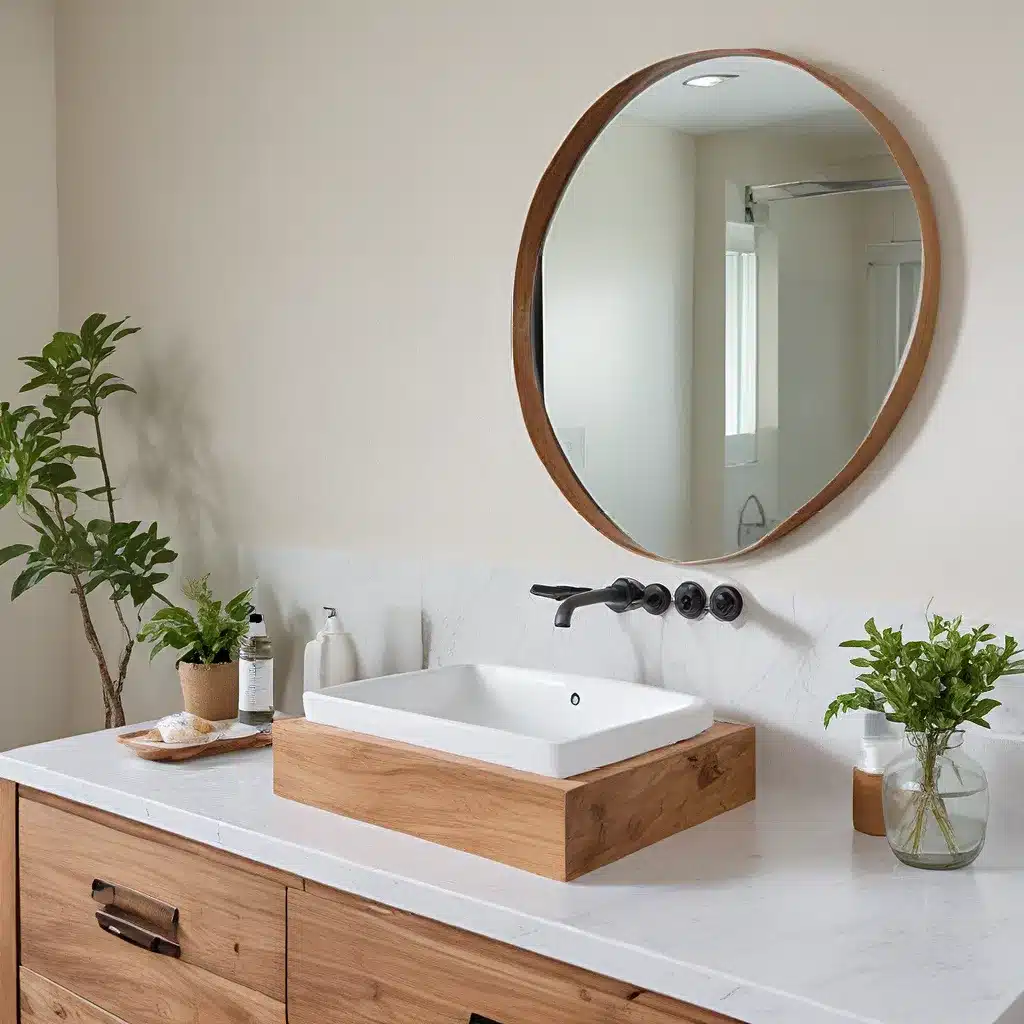
In recent years, the demand for sustainable bathroom remodeling has surged as homeowners and design professionals alike seek ways to create eco-conscious living spaces. Whether you’re tackling a small powder room update or a complete master bath renovation, incorporating environmentally-friendly materials and water-saving fixtures can significantly reduce your home’s carbon footprint while delivering long-term benefits.
Sustainable Bathroom Materials: Greener Choices for Your Space
When planning an eco-friendly bathroom remodel, the choice of materials is crucial. Look for renewable, recycled, or recyclable options that not only minimize environmental impact but also enhance the aesthetics of your space.
Bamboo is an increasingly popular material for bathroom vanities, countertops, and flooring. As a fast-growing grass, bamboo is a sustainable resource that can be harvested without causing harm to the environment. Its natural beauty and durability make it an excellent alternative to traditional wood.
For countertops, consider recycled glass or concrete. Recycled glass countertops are created by combining post-consumer glass with resins, resulting in a unique, eye-catching surface that diverts waste from landfills. Concrete countertops, on the other hand, can be made using sustainable binders and aggregates, offering a modern, industrial-chic look.
Sustainable flooring options for your bathroom include cork, bamboo, and recycled glass tiles. These materials not only look beautiful but also provide excellent water resistance and slip-resistance, making them ideal for high-moisture environments.
Water-Saving Fixtures: Reducing Consumption Without Sacrificing Performance
One of the most impactful ways to make your bathroom more eco-friendly is by installing water-saving fixtures. These innovative products use advanced technology to reduce water consumption without compromising performance or user experience.
Low-flow toilets can significantly reduce water usage, using as little as 1.28 gallons per flush (GPF) compared to traditional models that can use up to 3.5 GPF. These high-efficiency toilets are designed to provide a powerful flush while conserving precious water resources.
Similarly, aerated faucets and showerheads mix air with water, maintaining water pressure while reducing overall water usage. Look for WaterSense-certified fixtures, which meet the U.S. Environmental Protection Agency’s (EPA) criteria for water efficiency and performance.
By upgrading to these water-saving fixtures, you can not only lower your monthly utility bills but also contribute to the conservation of our natural resources. The bathroom is the perfect place to start making changes towards a more sustainable home.
Eco-Conscious Design: Minimizing Waste and Maximizing Efficiency
When planning your bathroom remodel, consider design choices that minimize waste and promote energy efficiency. This can include strategies like cabinet refacing and counter overlays, as well as the selection of energy-efficient lighting and proper ventilation.
Instead of completely replacing your bathroom cabinets, cabinet refacing allows you to update the look by replacing just the doors and drawer fronts, while keeping the existing cabinet boxes. This not only saves money but also reduces the amount of waste generated during the remodeling process.
Similarly, counter overlays provide a durable and eco-friendly alternative to replacing the entire countertop. These overlays can be made from sustainable materials such as recycled glass or concrete, and they can be installed directly over the existing surface, further reducing waste.
Lighting is another crucial element in any bathroom design, and it can also contribute to energy consumption. Opt for energy-efficient LED bulbs to illuminate your space while reducing electricity usage. Consider installing dimmer switches or motion sensors to further minimize energy consumption when lighting is not needed.
Proper ventilation is essential for maintaining a healthy indoor environment and preventing moisture-related issues like mold and mildew growth. When remodeling your bathroom, ensure that you have adequate ventilation in place, such as a high-efficiency exhaust fan to remove excess moisture and odors from the air.
Caring for Your Eco-Friendly Bathroom
Maintaining the sustainability and longevity of your eco-friendly bathroom is just as important as the initial remodeling process. Proper care and maintenance will ensure that your sustainable investment continues to deliver long-term benefits.
For washbasins and fixtures, follow the manufacturer’s instructions for cleaning and care. Avoid harsh chemicals and opt for environmentally-friendly cleaning products whenever possible. Regular maintenance, such as tightening fixtures or addressing small leaks, can help prevent water waste and extend the lifespan of your bathroom components.
When it comes to sustainable bathroom materials, be mindful of their unique care requirements. For example, bamboo surfaces may require occasional oiling or sealing to maintain their natural luster, while concrete countertops may need periodic resealing to protect against stains and moisture.
By incorporating eco-friendly materials, water-saving fixtures, and efficient design strategies into your bathroom remodel, you can create a visually stunning and environmentally conscious space that reflects your commitment to sustainable living. Whether you’re upgrading a small powder room or transforming your master bath, the benefits of an eco-friendly bathroom renovation are sure to be enjoyed for years to come.
For more information on sustainable bathroom products and design solutions, be sure to visit Washbasin Factory. Our team of experts is dedicated to helping you achieve your dream of a greener, more efficient bathroom.

